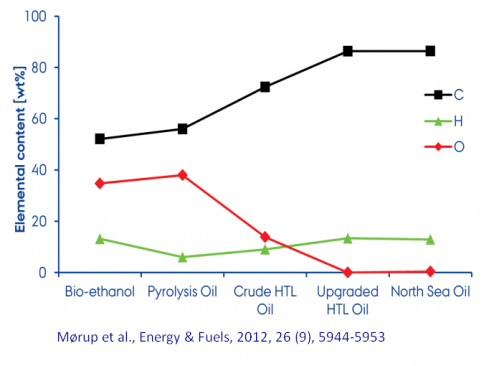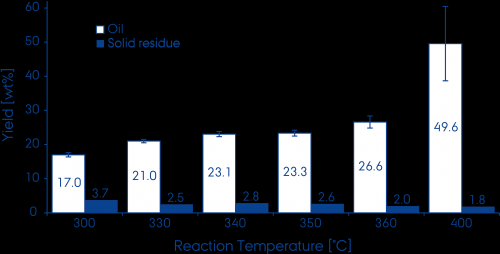Hydrothermal liquefaction—most promising path to sustainable bio-oil production

A new generation of the HTL process can convert all kinds of biomasses to crude bio-oil, which is sufficiently similar to fossil crude oil that a simple thermal upgrade and existing refinery technology can be employed to subsequently obtain all the liquid fuels we know today. What is more, the HTL process only consumes approximately 10-15 percent of the energy in the feedstock biomass, yielding an energy efficiency of 85-90 percent.
To emphasize, the HTL process accepts all biomasses from modern society – sewage sludge, manure, wood, compost and plant material along with waste from households, meat factories, dairy production and similar industries.
It is by far the most feedstock flexible of any liquid fuel producing process, including pyrolysis, bio-ethanol, gasification with Fischer-Tropsch or catalytic upgrading of different vegetable or agro-industrial residual oils, and does not carry higher costs than these.
Hydrothermal liquefaction is basically pressure cooking, but instead of cooking the biomass in batches, one pot-full at a time, this new generation of HTL is based on flow production, where the biomass is injected into a 400 °C pre-heated reactor, "cooked" under high pressure for ~15 minutes and then quickly cooled down to 70°C.
At 400°C and high pressure the water is in a supercritical state, neither liquid nor gas, at which it easily decomposes the biomass. The process is environmentally friendly, since no harmful solvents are involved, and the energy efficiency is very high: The HTL process only consumes approximately 10-15% of the energy in the feedstock biomass, because the heat energy is recycled between the heating and cooling of the process medium.

The wet medium means that HTL readily accepts moist or wet biomasses, such as those mentioned above. Wet biomasses are in vast majority on Earth. All other known processes for liquid bio-fuel production either require expensive drying or only make use of a limited proportion of the biomass, e.g. the carbohydrate content.
The water phase emanating from the HTL process has low carbon contents and can either be recycled into the process or ultimately be purified to attain drinking water quality, which is the long-term goal. As such HTL replaces the burden of disposal with the benefit of recycling.
The HTL process has the following benefits:
- Crude HTL oil has high heating values of approximately 35-39 MJ/kg on a dry ash free basis
- The HTL process only consumes approximately 10-15% of the energy in the feedstock biomass, yielding an energy efficiency of 85-90%
- Crude HTL oil has very low oxygen, sulphur and water content (compared to e.g. pyrolysis oil which typically contains approx. 50% water)
- HTL oil recovers more than 70% of the feedstock carbon content (single pass)
- HTL oil is storage stable, and has comparatively low upgrading requirements, due in part to a high fraction of middle distillates in the crude oil. It is much less upgrading intensive than e.g. pyrolysis oil, which needs immediate upgrading in order not to deteriorate.
In Denmark, Aarhus University and Aalborg University are in partnership on HTL research at all levels. In Aarhus, Dept. of Chemistry focuses on fundamental understanding of the process and quick surveys of the effects of different feedstocks and catalysts along with subsequent upgrading. Dept. of Agro-Ecology develops energy crops while Dept. of Engineering works on pilot-scale HTL. The latter is pursued even more vigorously at Aalborg University (Dept. of Energy Technology), which focuses strongly on pilot-scale production and process efficiency, as well as upgrading of HTL bio-oil along with end user testing of oils and upgraded distillates in engines and turbines. The Dept. of Biotechnology, Chemistry and Environmental Engineering, AAU Esbjerg, directs its activities towards extracting value not only from the oil, but also from the effluents.
The combined efforts and unique results already obtained hold promise of another energy technology endeavor in Denmark comparable only to the breakthrough of the windmill-industry in the 1980's.
Provided by Aarhus University

















